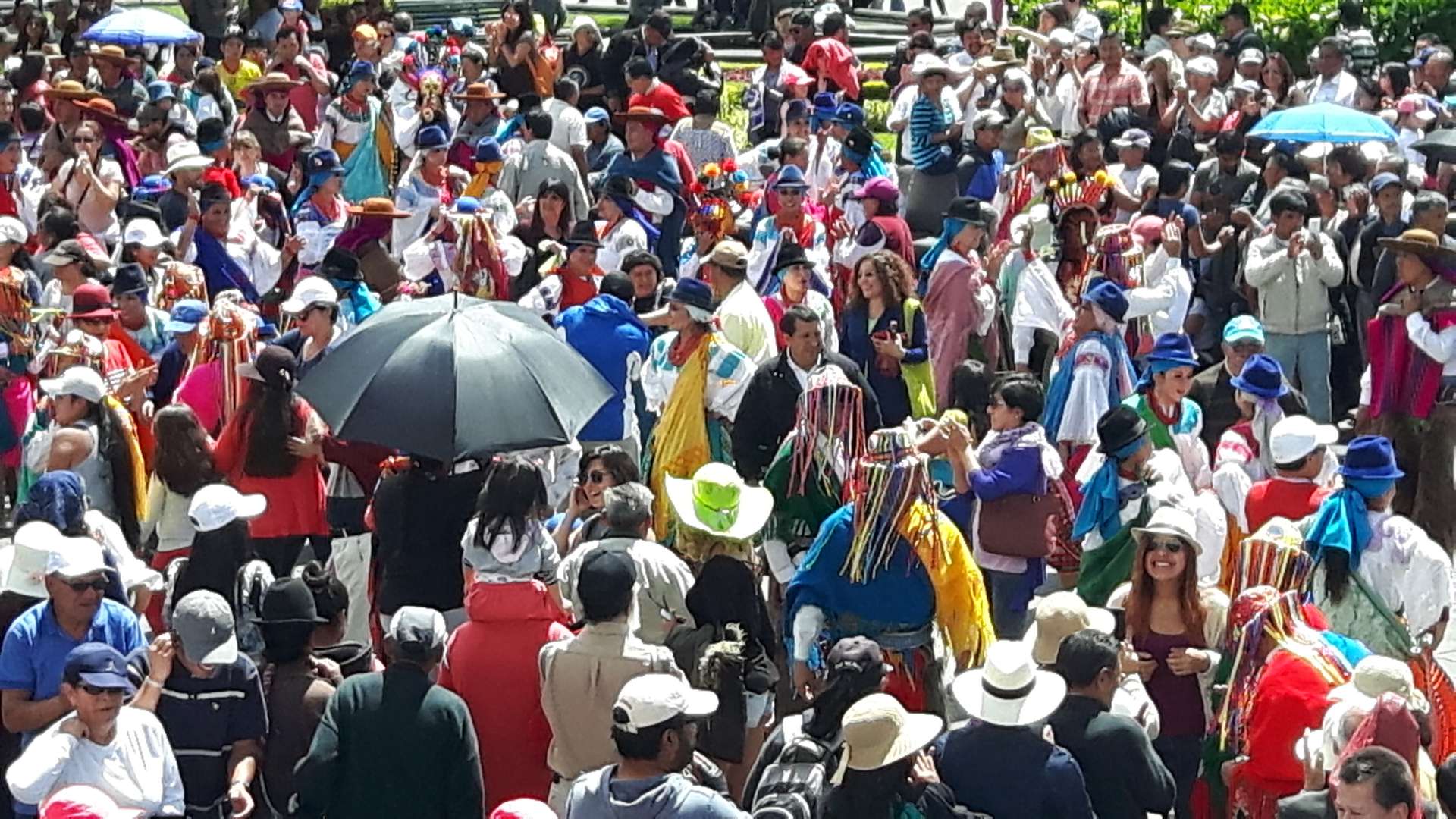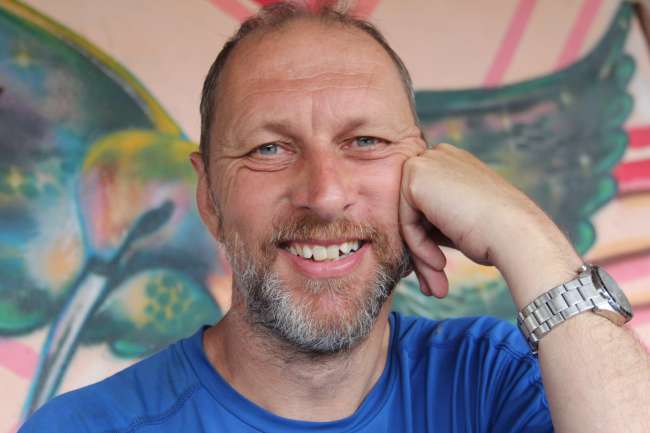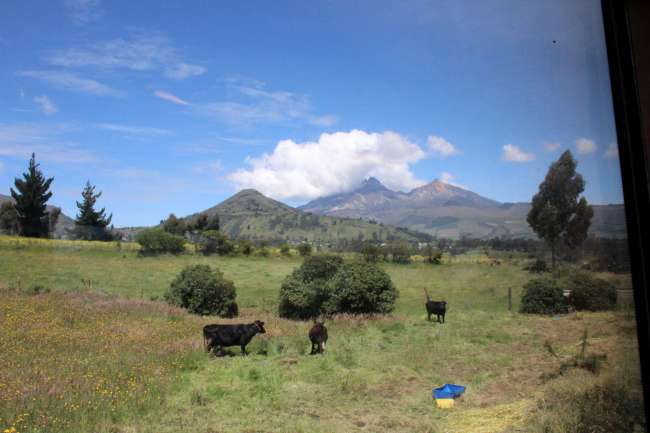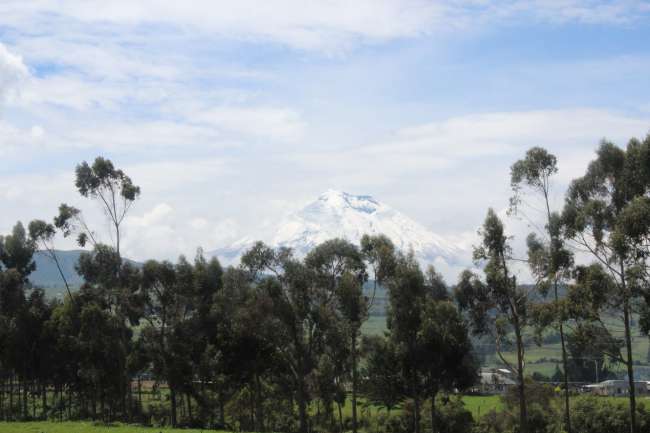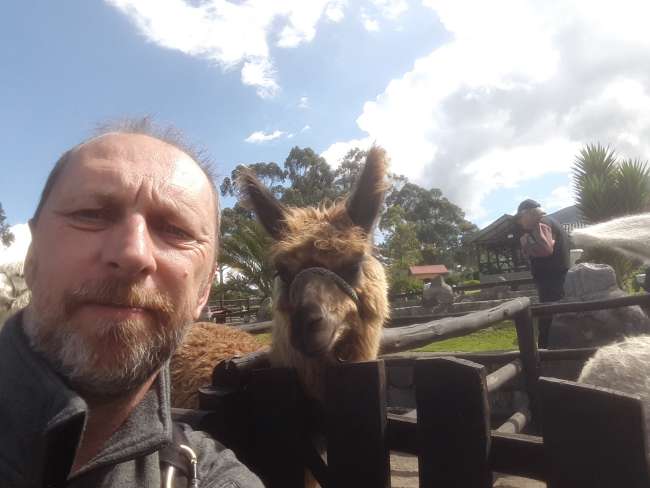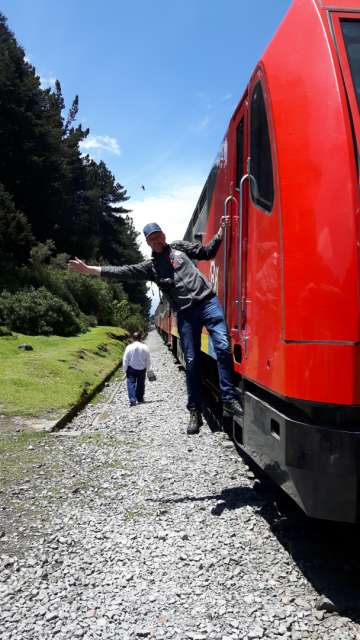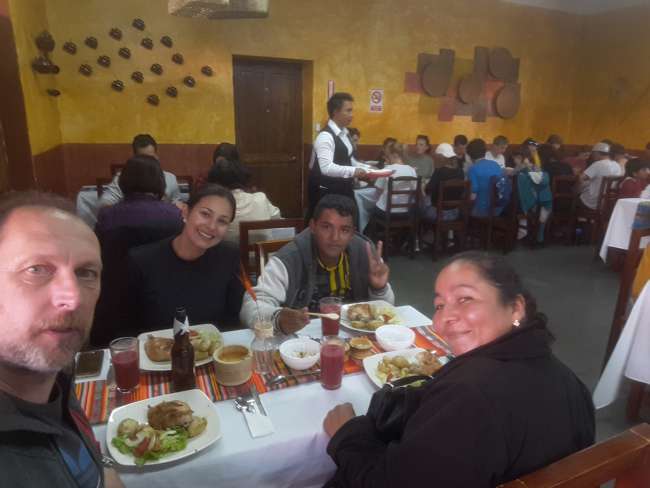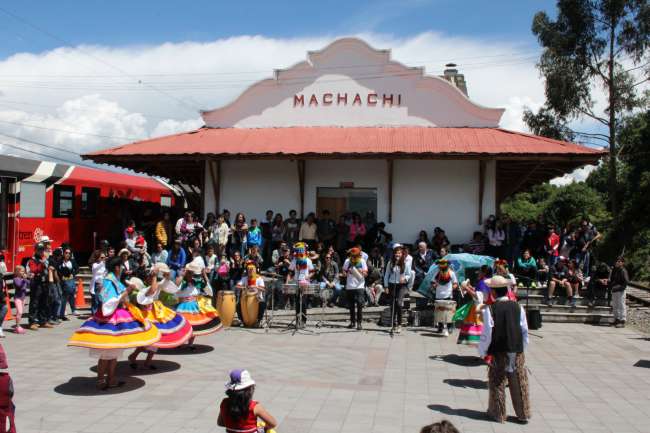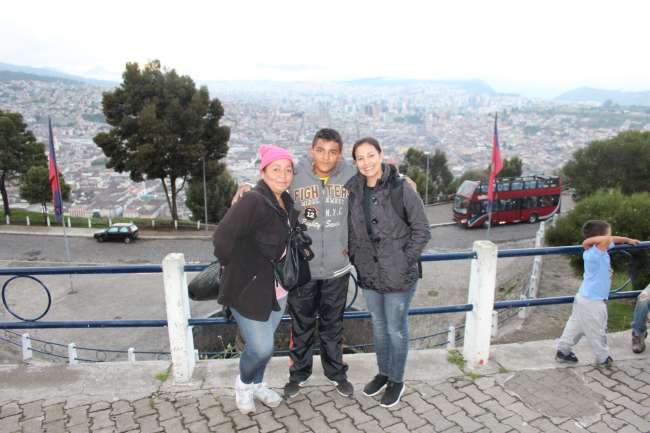Train of the Volcanoes
Atejade: 23.04.2017
Alabapin si iwe iroyin
You feel a bit transported to another time. The taxi stops in front of the train station, you get out, go up the stairs. There are hardly any people, it's only 7 o'clock in the morning. As soon as you enter the platform area, two men are cleaning the white tiled sidewalk. They are uniformed and wear a black cap. I wouldn't be surprised if Hercule Poirot came around the corner now to start the investigation into 'Who brought the Orient Express to Quito?'
So, back to Quito.
Alessandra, a student from the same language school, got a ticket for this train on Wednesday, and I decided to join her. So we ended up on this platform and are looking forward to the trip. The joy is so great because the weather is finally nice after a week of cloudy and cold weather, with mostly rain.
After the information in a train station hall, we board the train. In the same compartment are a group of students from the United States and many other tourists. As I later learn, only a few of them are from Ecuador, although they may look and sound like it to me.
The ride is initially frightening for me. Slowly, almost at a walking pace, we go through the south of Quito. Everything is poor, makeshift, dirty, improvised, dilapidated before it is even built. Fantastic graffiti is along the railway. And all the faces looking at the train are radiant, happy, waving. That also stands out. A few minutes after I have spotted the hill where I will later volunteer with Minadores de Suenos, the developed areas loosen up. It becomes more rural. Vegetation appears. We cross small valleys, overgrown with eucalyptus trees, meander along small rivers, and in the distance, one of the volcanoes that gave the train its name can be seen. They are also eagerly commented on. The announcement is made in Spanish and English. Needless to say, I understand it better in English. Surprisingly, the American students, led by a Spanish-speaking guide, hardly pay attention to the landscape. They play cards or, unbelievably, watch a movie on their smartphones throughout the whole trip. And they are on the prettier side. Where you can also see the Cotopaxi in full size from time to time. I hope the train will be turned around for the return trip.
There is a refreshment break at a small station. Then we continue. Now the landscape is exactly as I know it from movies, from photos. I am in the Andes. Populated area with fields of corn and potatoes, also other plants that I don't know. Surrounded by hills, or rather volcanoes. They are mostly extinct volcanoes, so they look like jagged mountains. The beautifully shaped volcanoes with white caps are further away, behind the hills. Cotopaxi is the first among them, which we slowly approach.
At the end of the journey, we are in El Boliche, at the foot of Cotopaxi. It almost looks like a mountain forest here. You can't see the volcano from here. In groups, we take a path through the forest. The highlight is the Quishuar tree. It is a sacred tree. People from the Amazon came up to find it, and the Incas celebrated important ceremonies under its canopy.
Alessandra, my companion (or vice versa), has meanwhile made friends with an Ecuadorian boy named Luis. We took photos of each other and finally all sat together on the train. This time we are actually on the side of Cotopaxi, but it is now covered in clouds and doesn't feel like showing itself again. The return journey is a varied one. There is a stop in Machachi. A group of Indigenous people make music and dance. Folklore is part of the program of the Tren de los Volcanos. The passengers are invited to join in the dance. Luckily, I am not asked to. Some Americans spontaneously join in and put on a show. Cheers all around, and they do it well and really enjoy it. Then there is lunch. The four of us sit together. The Ecuadorian woman is a police officer in Quito, her son is thirteen and studies in Guayaquil. Characteristic: he is constantly eating, but he is an absolutely nice, spontaneous, helpful, and open guy. He helps wherever he can. There is a lot of talking on the way back, not by me, but I try to follow the conversation. Succeeds occasionally. Back at the Chimbacalle train station, we don't say goodbye just yet. On the train, Alessandra had the idea to visit the Panecillo because of the beautiful weather.
The Ecuadorian woman (I have to call her that because I don't know her name) suggests taking a bus to Plaza Santo Domingo and then taking a taxi from there. We do as she says. They come along because they have time.
At the plaza, we take a taxi. The taxi driver starts driving, and at the first intersection, the Ecuadorian woman makes it clear that she knows the next way. Finally, we are on the Panecillo, and the view at dusk is breathtaking. I can't photograph it all. I just try and enjoy the view.
Then we go down by bus. One comes that connects the Panecillo with the Mitad del Mundo. I would like to know where the bus is going, because I want to go there too someday. But the system of which bus goes where is completely unclear to me. I still don't know exactly where to catch it, but I believe you have to keep to one of the western bus routes from north to south and vice versa, along Avenida America. We get off at the Tejar bus stop after the tunnel. It is the first time I could sit on a bus. From there, we walk down to Plaza Marin. Luis tells me that I absolutely have to strap on my backpack. It is dangerous here. The usual trick is to make a cut in the backpack or bag with a knife. And I shouldn't fall behind. It is much safer to go in a group of four. On the way, Luis and his mother tell several stories of robberies that I don't understand a third of. Maybe it's better that way.
We say goodbye at Marin Central. Very cordially, with a tight embrace and three or four 'Muchas gracias' from me. I have a special surprise for Luis. I have been carrying a chocolate bar around all day. But since there was always plenty to eat, I didn't need it. I give it to him now. Man, his face lights up!
Alessandra checks with the security officer at the bus entrance to make sure we take the right bus. We squeeze in there. Why are there always only people getting on these buses and never anyone getting off? Again, it's crowded ... It gets worse until the end of our journey. The stations are not recognizable, I wouldn't recognize them anyway. At some point, the bus crosses the road that comes up from the airport. Thanks to my Garmin, which I can take out of the strapped backpack, we get off at the right place.
After conquering the altitude to the home base and saying goodbye to Alessandra, there is only one place left. No, two: First the shower.
No energy left for the blog.
Alabapin si iwe iroyin
Idahun
